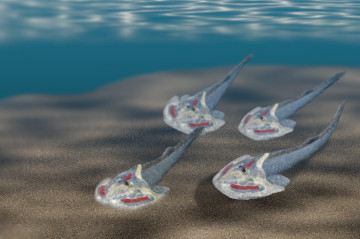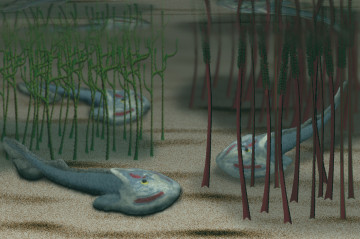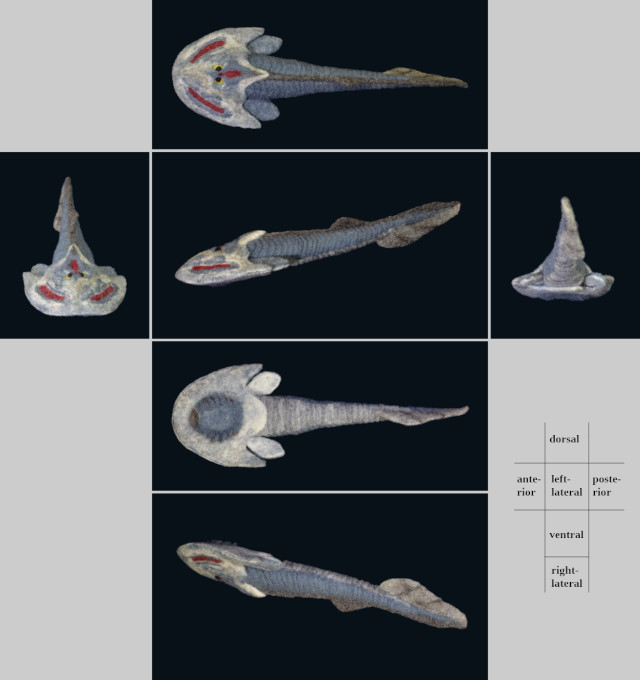Cephalaspis lyelli
Cephalaspis has a triangle-shaped cephalic shield, with a pair of well-developed cornual processes (cornua for short) extending from its sides to posterior 3). Total length of the body is approximately 25 cm 3).
The eyes are located close to each other on the dorsal surface of the head shield, and behind them and on each side of the shield are depressed area called the dorsal electric field and the lateral electric fields, respectively 2), 3). Presumably, these are sensory organs. The mouth-opening and the gill-openings are on the ventral side of the cephalic shield 2).
The distinct anterior dorsal fin is not found, but the dorsal crest extending from the median dorsal crest of the head shield is on the median of the trunk, the posterior dorsal fin is much further back 3). The caudal fin is heterocercal 3) (like that of a shark with large upper lobe). There are well developed pectral fins which are large and paddle-shaped 3). A ventral fin and an anal fin are not found 3).
Cephalaspis inhabited freshwater and brackish area, such as lagoons, deltas, estuaries 1).
Cephalaspis have a mouth-opening on the ventral surface (of couese, no jaws) and are flat body shape, therefore, they probably lived on the bottom by sucking organic debris from the mud and preying on small benthic animals 1), 2). The eyes would be used for defence. Actually, the partialy digested head of small Cephalaspis have found from the body cavity of large Acanthodians 1).
C. lyelli, the type species of the genus Cephalaspis 3), is probably named after Sir Charles Lyell, the well-known author of "Principles of Geology".
References:
- Denison RH (1956) A review of the habitat of the earliest vertebrates. In Fieldiana: Geology; Vol.11 No.8. Chicago Natural History Museum. Chicago.
- Stensiö EA (1927) The Downtonian and Devonian Vertebrates of Spitsbergen. Part 1 Family Cephalaspidae. Skrifter om Svalbard og Nordishavet. Resultater av de norske statsunderstøttede Spitsbergenekspeditioner XII. Norske Vidensk.-Akad. Oslo.
- Stensiö EA (1932) The cephalaspids of Great Britain. British Museum (Natural History). London






modified in October 2022.